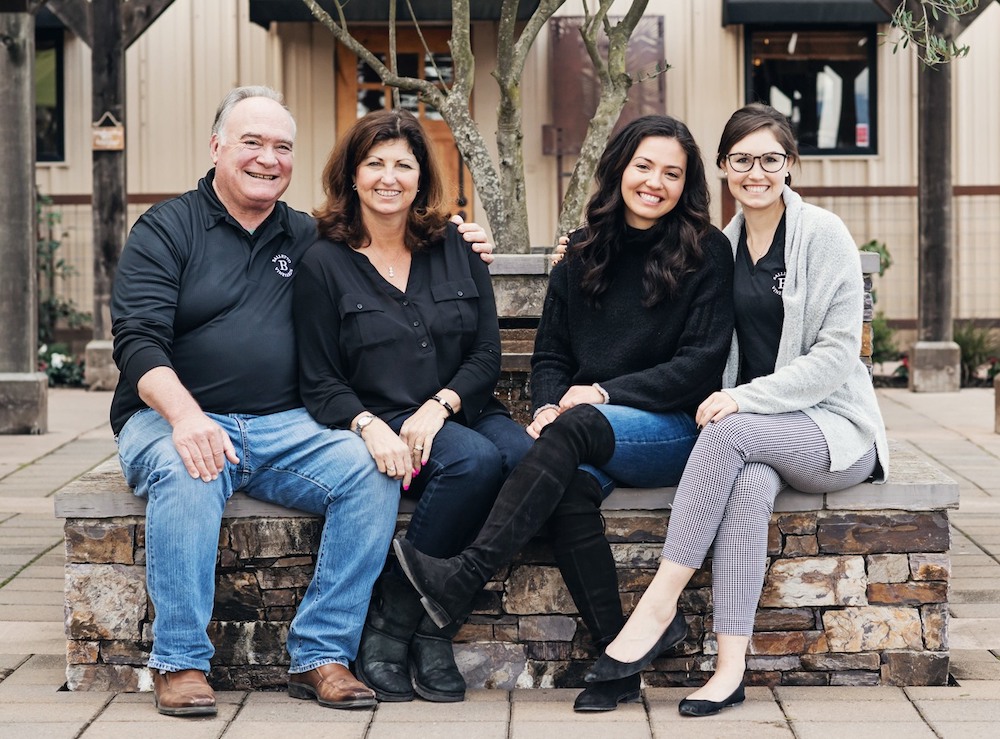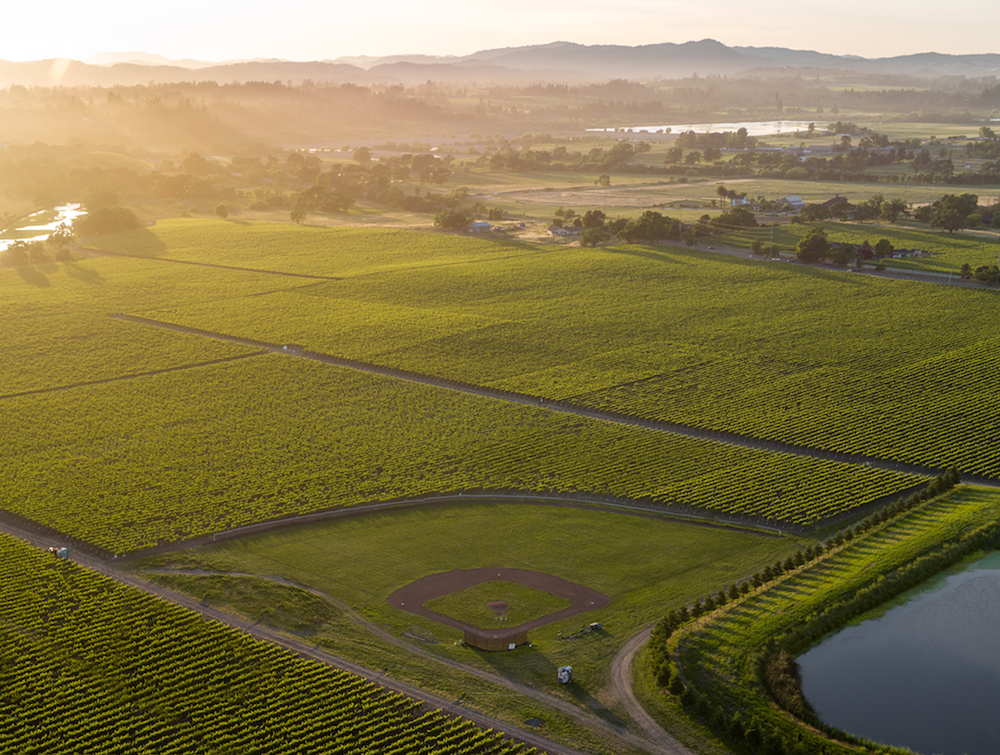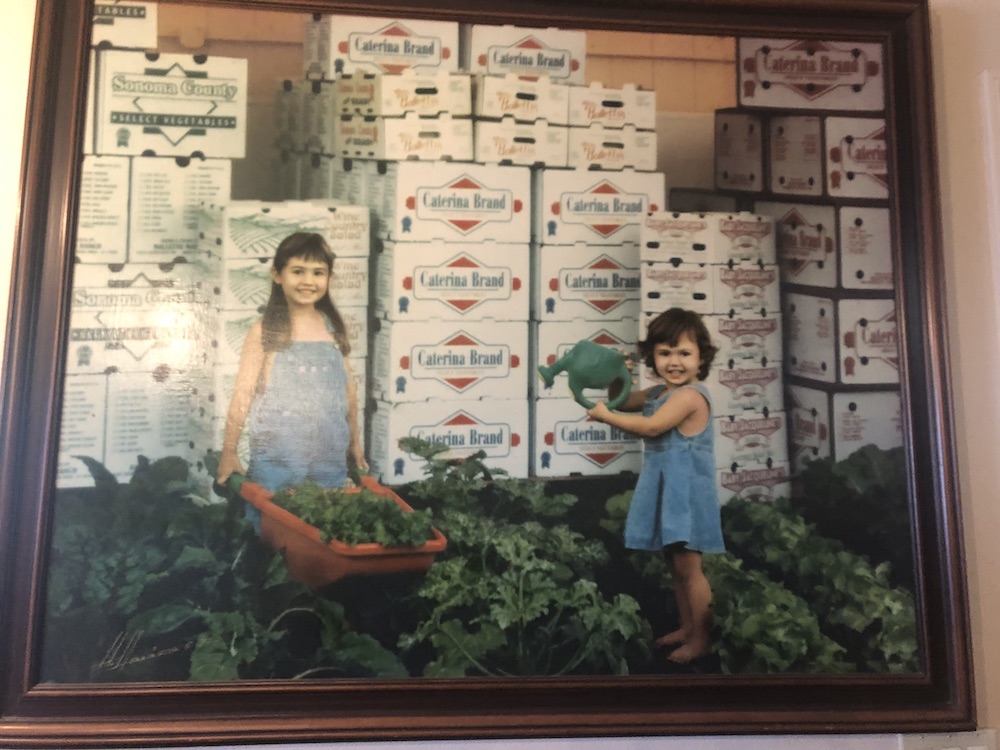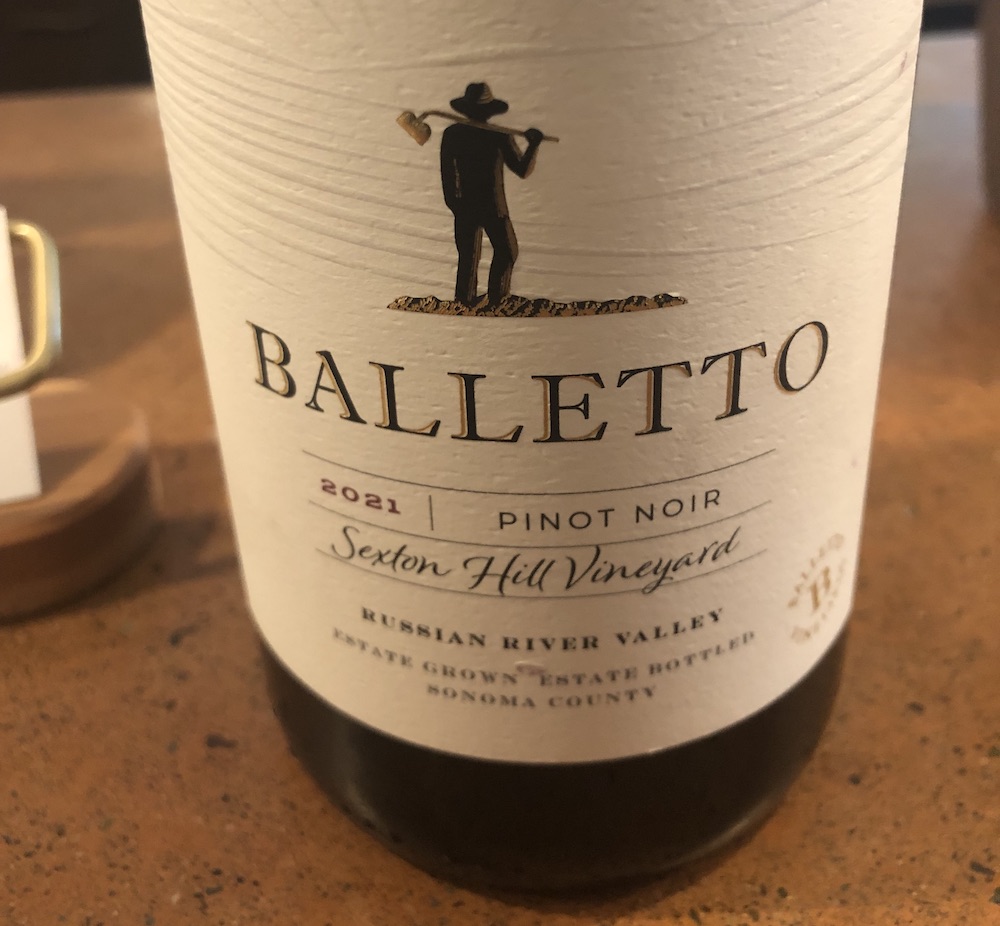
March 7, 2025 – Traveling through the Salinas Valley never grows old. It grounds you in the reality that someone has to grow all that gorgeous produce you take for granted every time you go to the market. Back in the early days of California, many households grew their own produce. Some were entrepreneurial enough to grow more than they needed, hauling their wares to markets like San Francisco, where home gardens were less common.
Sebastopol area winegrower John Balletto started his career as a farmer at an early age. It was clearly in his genes. His grandfather left his ancestral village of Maxena, north of Genoa, and passed through Ellis Island. Making his way west, he settled in San Francisco, where he worked as a field laborer in the Westlake area, which was once a vast farmland, before moving to even more agrarian Sebastopol.
When Balletto’s father died suddenly in 1977, he helped his mother Hazel grow zucchini and haul it to the market in the Dogpatch neighborhood of San Francisco, three days a week. Balletto was a talented football player and still holds the record for shotput at his high school, and although he had several college athletic scholarships, he decided to stay on the farm. At the time, they had just five acres, but that would change.
“My mother was always telling me that we needed to buy more land. She saw the value in that,” he says.
She had good reason. Hazel’s family had lost their Oklahoma farm in the Great Depression of the 1930s, when she was 16. With only $3 in her pocket, she came to California to start a new life.
Little by little, they purchased more land, expanding their offerings far beyond squash to include mesclun, baby spinach, leaf lettuce, basil, arugula, kale and chard. By 1994, they had become the largest market farm in Northern California, growing more than 70 different vegetables on 700-plus acres, which by this time included land in the hills, above the Santa Rosa plain.
Balletto produce was in big demand. “Safeway asked us to grow for them,” says Balletto. Safeway! At that point, the Balletto’s were moving more than 2 million cases of vegetables a year through the old loading dock that is still in use next to the Balletto tasting room.
Vegetables are a water intensive crop. By the middle of the 1990s, Balletto and his wife Terri could see that California’s growing water shortage was becoming worse and decided to follow the lead of one of their good friends and neighbors, Warren Dutton of Dutton Ranch, and plant grapes. Their first foray into vines was conversion of 35 acres of a vegetable field into the Burnside Road Vineyards in 1995.
Here, they planted 20 acres of Pinot Noir, 10 of Chardonnay and 5 of Pinot Gris, mostly for the use of DeLoach Vineyards at the time. Balletto remembers that Dan Cedarquist was their first winemaker and would eventually make the first wines under the Balletto label. Then came the triple weather whammy of 1998, when three El Nino storms wiped out most of their vegetables and caused $2 million in damage. This was compounded by a new NAFTA agreement that increased competition from non-domestic markets.
“Between 1999 and 2001, our vegetable business hit a wall,” says Balletto. “We had to decide if we were going to stay in our current location or move the operation to Salinas. At that point, we borrowed money to plant more wine grapes, and by the end of 2001, we had 300 acres of vines. We sold the vegetable business, including our brands and distribution, to a Salinas family in Watsonville.” Having converted all the vegetable acreage to vineyards, they decided to be in the grape business, rather than the wine business. It proved quite an adjustment.

“I miss the excitement of the sales office and the 6 to 10 semi’s that we loaded daily out of here!” says Balletto. Vines require year-round maintenance, but the excitement mostly happens around a once-a-year harvest. It’s a long time between adrenaline rushes.
By 2001, they had enough grapes to make their first vintage: 689 cases of Pinot Noir and 391 cases of Chardonnay, from the Russian River Valley. The label, unsurprisingly, bears the woodcut image of a farmer in the field with his plough.
Always with his mother Hazel’s voice in his ear, Balletto knew he needed more land, and kept purchasing parcels throughout the Sebastopol Hills and throughout the Russian River, planting in some very special sites, including Cider Hill and Pelletti vineyards.
“In 2003, grape sales hit a rough patch,” Balletto says. “Then in 2005, along comes this movie, Sideways, and demand for Pinot Noir skyrocketed. We kept expanding our landholdings until we had 24 different vineyards.”
Balletto built their tasting room in 2005 as well, and one of the prominent features is the enormous photo of John and Terri’s two girls, Caterina and Jaqueline, playing amongst the produce, the branded boxes in the background.

Today, they farm 850 acres of grapes and make 8 different single vineyard Chardonnays and Pinot Noirs. They produce between 20,000 and 25,000 cases yearly, depending on the seasonal yield. Their winemaker, Anthony Beckman, a former reporter, joined them in 2007 and was quickly tasked with designing some of the new vineyards, including Sexton Hill, Cider Hill and Pelletti.
He told a gathering of wine judges at the special 25th anniversary dinner for the San Francisco Chronicle Competition hosted by Balletto Vineyards, that he felt deeply honored to have been handed such a daunting responsibility. He was especially taken with the Cider Hill site, a former apple orchard. In fact, much of the area was planted to apple orchards from the 1930s until the 1990s, when vineyards slowly started to take hold.
For his part, Balletto is proud to still be farming 80 different fruit trees on his homestead. He’s also proud to have been one of the first in the area besides Dutton to plant grapes, with the Burnside Vineyard in 1995. He notes that Martinelli first planted in 1997, followed by Merry Edwards in 1998. Littorai was not planted until 2004.
Balletto tells me that he’s extremely proud of his winery family, including many lifelong employees, including his daughter Caterina and three generations of field and vineyard workers, without whom the business would not be sustainable. Everyone seems to love working here, and if it’s not for the wine, which is excellent, it’s for the sheer beauty of the place.

Sited next to the 30,000-acre Laguna de Santa Rosa watershed, it’s the perfect destination when out for a hike. Being part of the watershed, means some of the vineyards have wet feet in the winter. With this year’s torrential rains and flooding all around the area, tasting room manager Brandon Parkhurst was able to kayak to work. It’s not something he wants to make a habit of, but he admits it was a pretty cool experience.
In another nod to the importance of family, at the request of the farm crew, Balletto dedicated 4 acres of the estate property and the materials needed for constructing a regulation baseball field. The crew invested the labor and the result is the Dream Field, where company employees and their families have a place to play. On August 10, fans of old-time baseball can come watch Bay Area Vintage Baseball League teams play ball on the Dream Field while Balletto hosts their wine club pick-up party.
On a walk through the property, we saw the enormous reclamation pond, many ducks and massive solar panels that were installed three years ago. They power the entire Balletto facility, from winery to storage to offices and tasting room.
And then there’s a dreamy looking dairy barn where interns (including the Beckman in 2007) have stayed. It sits, a relic of the past, like an egret poised at the edge of the vast Laguna wetlands. Hopefully it will remain a reminder of the region’s deep agricultural roots, long after whatever the next market cycle brings.
Balletto Wines Not to Miss
There are many great wines in this portfolio, some of which you can even find at Safeway.
Among the standouts:
2020 Cider Hill Vineyard Chardonnay ($42) – Lemony, juicy, with pretty orchard fruit
2023 Rosé of Pinot Noir ($25) – Crisp, refreshing, watermelon and strawberry
2023 Pinot Gris ($25) – Savory, citrusy, linen texture, sophisticated – we’re so glad that Balletto planted PG (BTW, they sell some fruit to J Vineyards)
2021 Sexton Hill Pinot Noir ($55) – Lithe, red fruited, cedary and lovely
18 Barrell Pinot Noir ($58) – A bold, standout choral rendi,tion from Balletto’s vineyards throughout the Russian River
Balletto Vineyards, 5700 Occidental Road, Santa Rosa is open daily from 10 to 5pm; reservations are not required. Special tastings by reservation include seated library verticals, and various estate tours.
About the author
Laura Ness is a longtime wine journalist, columnist and judge who contributes regularly to Edible Monterey Bay, Spirited, WineOh.Tv, Los Gatos Magazine and Wine Industry Network, and a variety of consumer publications. Her passion is telling stories about the intriguing characters who inhabit the fascinating world of wine and food.
- Laura Nesshttps://www.ediblemontereybay.com/author/lness/
- Laura Nesshttps://www.ediblemontereybay.com/author/lness/
- Laura Nesshttps://www.ediblemontereybay.com/author/lness/
- Laura Nesshttps://www.ediblemontereybay.com/author/lness/


